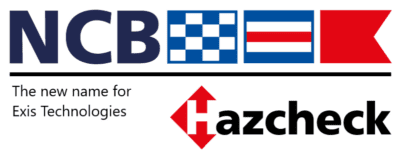Carry the can, Hazardous Cargo Bulletin, April 2021 issue
CONTAINERS • DIGITAL TOOLS ARE MAKING INROADS INTO THE PERSISTENT THREAT POSED BY UNDECLARED OR MISDECLARED DANGEROUS GOODS BUT THERE IS MORE THAT CAN BE DONE, SAYS EXIS TECHNOLOGIES
For nearly 35 years, Exis Technologies has been helping shippers and carriers in the transport of dangerous goods by sea, providing data and validation to ensure that such goods are carried safely and in accordance with the requirements of the International Maritime Dangerous Goods (IMDG) Code. Its client list now includes nine of the ten largest container lines as well as many smaller operators, together with ports, terminals, authorities and other interests.
As containerships get larger and the volume of trade increases, the importance of getting compliance right in the maritime supply chain grows too. And the expertise that Exis has developed over the years was bolstered three years ago through its acquisition by National Cargo Bureau (NCB), the US-based not-for-profit organisation that inspects containers on behalf of the US Coast Guard and other interests. Together, NCB and Exis offer a wealth of experience both in the physical world and in online services.
Exis Technologies now handles around 6 million validations every month via its Hazcheck platform, providing a snapshot of the volume and types of declared dangerous goods being moved by sea; alongside that, it now has access to a database of some 200,000 records of physical inspections carried out by NCB.
FIND THE CULPRITS
A number of high-profile fires at sea aboard containerships over recent years, many of them shown (or at least suspected) to have been caused by undeclared or mis-declared dangerous goods, have opened up a new market for the information that Exis Technologies has at its fingertips. The aim is to identify that ‘hidden’ cargo before it can get onto the ship and a number of the major lines have been working on systems designed to interrogate shipping documents before containers arrive at the load port.
With the encouragement of Hazcheck customer Maersk Line, Exis developed a new system, Hazcheck Detect, to do just that. It searches for the tell-tale signs of misdeclaration and the alternative descriptions the more unscrupulous shippers are known to use to avoid the cost of declaring their goods under the IMDG Code.
James Douglas, CEO of Exis Technologies, says that the system is now screening around 13 million cargo items per month, getting some 500 ‘hits’ every day. Not all of those are critical and the issues may be resolved before the goods get onto the ship. Nevertheless, he says, between 40 and 50 boxes are stopped each week, any one of which could have led to a fire aboard the ship.
Exis Technologies is aiming to be the main source of information about dangerous goods in the maritime chain. Given the structure of the container shipping business, were each operator to have its own system, there is still the potential for undeclared dangerous goods to creep through the net. And, while one carrier may spot the problem, another may not, with the possibility that the goods could end up on the first carrier’s ship.
It is fundamental, Douglas says, for screening systems such as this to be aligned right across the industry. And, while Exis is still fine-tuning the Hazcheck Detect platform, it is already showing its worth. One great benefit is that it works in real time; scanning takes seconds, allowing the carrier to be alerted immediately if something looks amiss and to prevent the box being loaded onto the ship. Maersk Line says this is a really major safety benefit.
The keywords used to find undeclared dangerous goods – and there some 10,000 of them, working through 4,500 ‘rules’ – can be shared with third parties and this would, Exis believes, help achieve that level of alignment necessary to be sure that undeclared dangerous goods do not find their way onto a ship.
FULL SPEED AHEAD
NCB and Exis have naturally been thinking about where they can take all this expertise and information in the future. Douglas is excited about the potential to apply machine learning and artificial intelligence (AI) to make some sense out of the massive data sets that are now available. “We can do a lot of things with all this data,” he says.
For instance, with their knowledge of those containers that have failed inspections, it should be possible to create a model to predict those containers that might fail at the next inspection, allowing NCB to target its resources more accurately.
The data could also be used to analyse what is going on in the real world of cargo booking, improving the screening process even further. “We need to continue on this path,” says Douglas. “Being with NCB makes it clearer that we need to do a good job with validations and screening.”
NCB itself has been clear about this process. In a White Paper published last year, it called for a comprehensive, holistic approach to enhancing safety in the maritime chain, by addressing the risks posed by non-compliant dangerous goods using integrated digital tools and a single, common dangerous goods database.
“A lot of the world goes around by using data,” Douglas says. “It’s not before time for us to do that in the maritime industry. It can make a big difference!”







